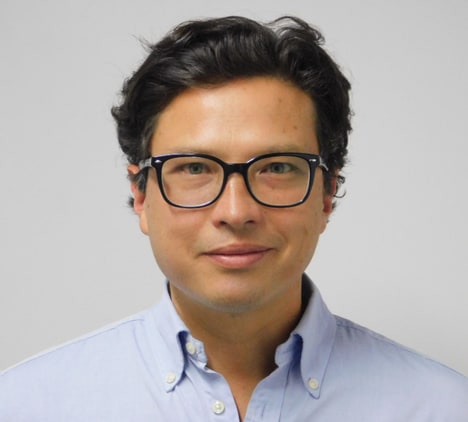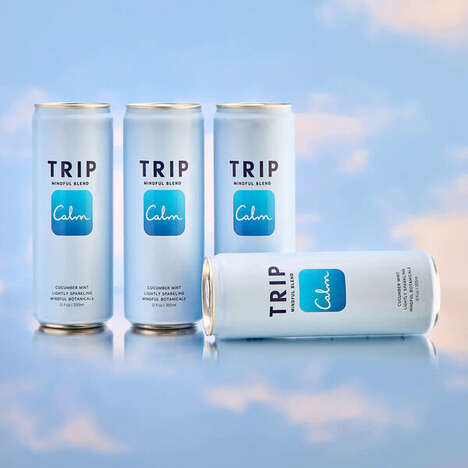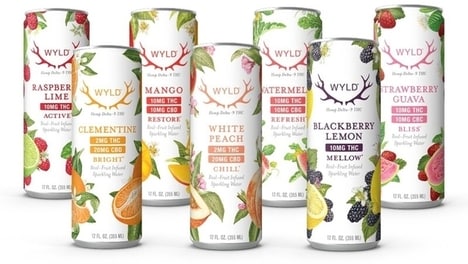The Trouble Seeker
An Interview with Miguel Olarte, Global Breakthrough Innovation Lead at Diageo
 Miguel Olarte has spent over two decades immersed in the world of open innovation, navigating the complex terrain from government initiatives to corporate transformation across industries spanning finance, beverage, and emerging technology. His philosophy centers on a deceptively simple yet profound principle: fall in love with the problem, not the solution. As a self-described "trouble seeker," Olarte has built his career on the belief that the most powerful innovations emerge not from brilliant eureka moments, but from deep, empathetic conversations with humans facing real struggles. His approach to innovation emphasizes collaboration, rapid testing, and the courage to embrace failure as a pathway to breakthrough solutions.
Miguel Olarte has spent over two decades immersed in the world of open innovation, navigating the complex terrain from government initiatives to corporate transformation across industries spanning finance, beverage, and emerging technology. His philosophy centers on a deceptively simple yet profound principle: fall in love with the problem, not the solution. As a self-described "trouble seeker," Olarte has built his career on the belief that the most powerful innovations emerge not from brilliant eureka moments, but from deep, empathetic conversations with humans facing real struggles. His approach to innovation emphasizes collaboration, rapid testing, and the courage to embrace failure as a pathway to breakthrough solutions.1. What does innovation mean to you, particularly as you've moved across different sectors from government to beverage?
Innovation is a very broad concept that needs to be narrowed down to very specific definitions. The way I see it, innovation brings new and different ways to solve common struggles, issues, or jobs to be done. For me, that's innovation—finding different ways to get things done. There's always a new way, a different way, and I'm very curious about that. I really believe in avoiding sticking to one way of doing things.
2. How do you and your team generate new ideas? What's your process for uncovering solutions?
First, it's important to understand what are the main frictions or struggles that we face as a team or individually. We usually ask this question in our monthly meetings: What is that biggest struggle or friction that we see, that we face? The way we do it is we fall in love with the problem and not with the solution.
We really want to nail down the problem. We usually think the problem is one thing, but when we go deeper, when we dive deeper into the problem, we learn that it's more complex than we thought. Usually we frame it in a different way after falling in love with the problem. Then you can find different ways to solve it—you can bring different solutions and test them in parallel to find the best way to solve a problem through an innovation process.
3. You mentioned "falling in love with the problem." Do you have any specific rituals or practices for maintaining this problem-focused mindset?
I love to call myself a "trouble seeker," in a way that I love to have a lot of conversations with people and really understand what are the challenges they're facing. I really enjoy connecting with people and opening the questions, opening the conversations so I can find the potential problems to solve.
Problems are very close to humans. We as humans face many challenges, many struggles, many problems. It's just about opening the conversation and letting people tell you about the things they are struggling with. When you have many conversations, you start to see common spaces and different opportunities. But what you need to do next is prioritize those problems and try to understand the size of the impact and the time to value.
4. How do you identify trends and emerging opportunities across different industries?
I follow Trend Hunter, to be honest. But mainly, we have this always-on radar looking at what's going on in different industries in innovation. I've worked in other industries—for instance, in finance, in the banking industry—and I see today in our business the same challenges that I saw 20 years ago in the financial banking industry. So you can bring learnings and best practices from one industry to the other.
Connecting with people—again, connecting with humans and having these conversations—really sparks curiosity. I think it's very important to have peer conversations across industries and connect with different groups. Sometimes you can bring a solution someone has been looking for, and sometimes you find your solution in a place where you're not expecting it.
5. What's the biggest challenge you face when driving innovation, particularly in your open innovation approach?
The biggest challenge is helping people understand that we need to prioritize problems based on impact and time to value. Some problems are bigger than others, and sometimes it takes more effort and resources to build a solution. We need to find that balance between the impact we can bring and the time to value to bring that impact.
There's also the challenge of technology adoption. For using technology, we still are humans using technology, and there's a gap for technology adoption. We need to focus on human behaviors and how to adopt technology. Everything is about people at the end. The development of projects and the adoption of technologies require people, so you need to understand what are the frictions and gaps that you need to fulfill with people adopting technology.
6. Has there ever been an instance where another industry has influenced an innovation in your current work?
Absolutely. As I mentioned, I see in our current business the same challenges I saw 20 years ago in the financial banking industry. It's like you can bring learnings and best practices from one industry to the other. This cross-pollination happens through conversations and connections across industries.
I really believe in the power of conversations to understand problems, struggles, and obstacles. Sometimes you find your solution in a place where you're not expecting it. That's why being open and having many conversations across different sectors is so valuable.
7. What makes an innovative culture? How do you create an environment that embraces this problem-focused, open innovation approach?
We promote curiosity and the co-creation element—the open innovation program is a platform for that. When you think a lot about the problem, you start to explore what different solutions you could bring to solve it, but you're still thinking about the problem. That opens your mind to different perspectives.
Being curious, externally curious, being open-minded, and encouraging people to test and learn rapidly is crucial. We have this process in which we reduce the fear of failure while letting people progress concepts through a process where they can evolve one step at a time. We embrace failure—that's part of the process.
If we don't find positive evidence after a pilot or after a test in the market, we're very comfortable about killing projects and killing ideas. It's not about people doing it wrong; it's about having a different problem framing. Maybe we need to reframe the problem or scout for other solutions, then pivot to test again while falling in love with the problem and staying focused on it.
8. Looking to the future, how do you see open innovation evolving, especially with emerging technologies like AI changing the landscape?
The fundamentals remain the same—it's still about people. Today we have certain technologies, tomorrow there will be others, and they're coming faster now. That's why we need to stick to the problem. We'll find different ways to solve those issues as technology evolves.
Even with AI, you need to understand human behavior for adoption. As simple as this: if you want to use ChatGPT, you need to learn how to prompt, and you need to understand that the quality of the output depends on the quality of the input. It's the same principle—understanding how to get it right from a consumer, from a human behavior standpoint.
The future of innovation will continue to be about providing people with tools to bring external talent, test rapidly in the market, and bring insights and learnings while progressing along that process. It's a very fun process, but it's 100% about people.
References: diageo


